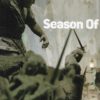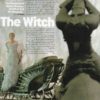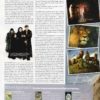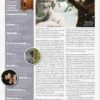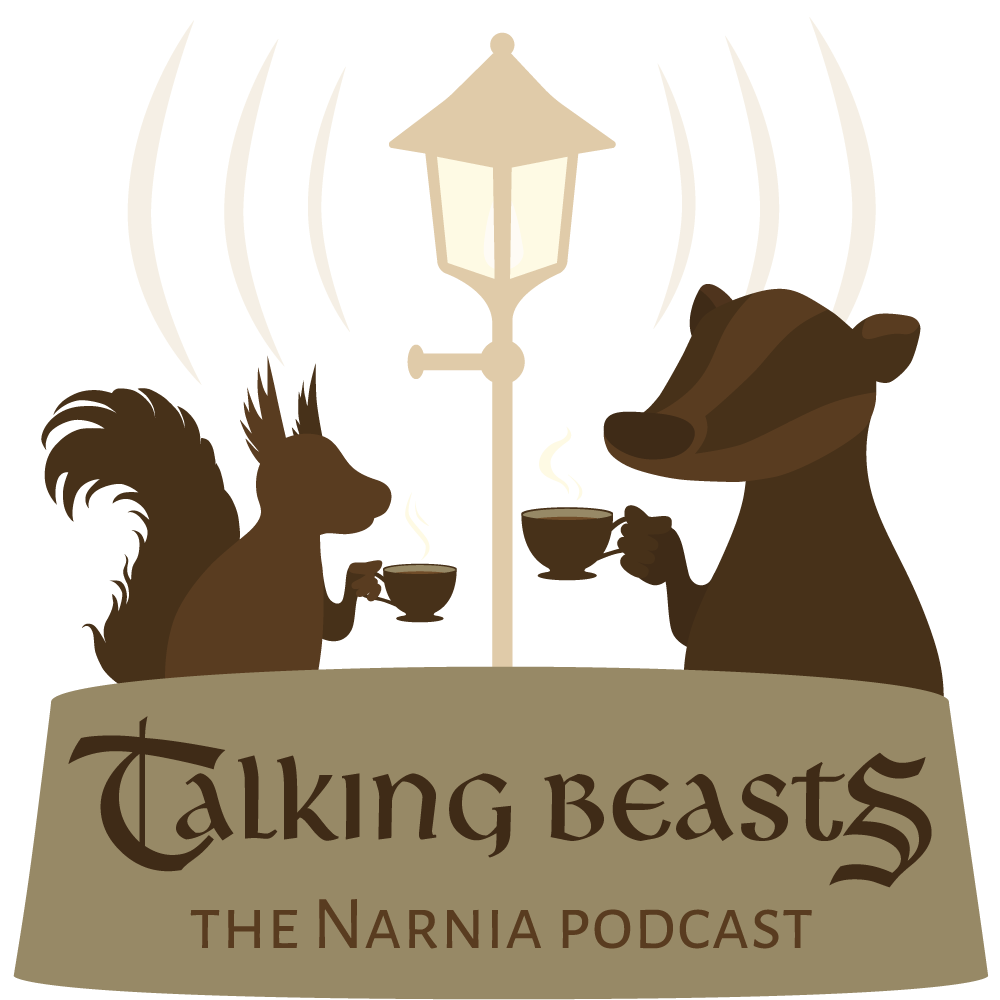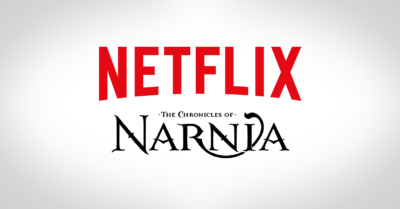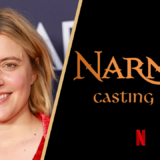Total Film Magazine Covers Narnia
Total Film (a UK film magazine) has Narnia as their September 2005 cover story. Thanks to Jints, we now have scans of the entire article.
The story features a sit-down conversation with director Andrew Adamson who is very straight-forward and candid about the film. There’s a few bits of dialogue and script thrown in so the spoiler-wary among you should beware. The article is fantastic, though, and well worth reading. See our transcript below:
- Total Film Magazine Scan
- Total Film Magazine Scan
- Total Film Magazine Scan
- Total Film Magazine Scan
- Total Film Magazine Scan
- Total Film Magazine Scan
Many thanks to NarniaWeb Staffer Jints for her hard work getting these scans and to NarniaWebber Gymfan for transcribing the story.
Visit the Total Film website (no story link at this time).
STORY TRANSCRIPT: THE CHRONICLES OF NARNIA
First look at the NEW Lord of the Rings!
In a world exclusive, director Andrew Adamson takes Total Film inside this winter’s Rings – rivalling spectacular The Chronicles of Narnia: The Lion, The Witch And The Wardrobe.
Words by Nev Pierce
SEASON OF THE WITCH
Written by an Oxford don. Published in the 50’s. Set in a vibrant fantasy world. More then 100 million copies sold. Themes of sacrifice and grace. Talking animals and magic trees. Shot in New Zealand. Directed by a Kiwi with no dress sense. Adapted for stage, screen and radio, but never done justice..Until now. The Chronicles of Narnia: The Lion, the Witch, and the Wardrobe is the mirror image of The Lord of the Rings. The authors’ relationship is even reflected in its adaptors: just as CS Lewis and JRR Tolkien were friends, so are Narnia’s Andrew Adamson, director of the Shreks, and Peter Jackson. But where Lewis had to lobby hard for Tolkien’s The Hobbit to be published, here Jackson’s success has given Adamson the chance to film, as the trailer has it, Lewis'”beloved’ novel.
So is Adamson, making his live-action feature debut with the expectations of millions upon him and industry hoping for a Rings-like box office behemoth, feeling the pressure? “Er. Yes,” he laughs. “But there are interesting similarities that work for us. Like you said, Pater helped make this possible. He showed there’s an audience for this possible. He showed there’s an audience for a faithful adaptation of an English classical fantasy.””
Total Film is sitting with the affable antipodean in the Narnia edit suite in London’s Soho, where he’s invited us to view work-in -progress sequences of his $100 million picture. It’s July, six months before the 9 December opening and 55 years since CS Lewis unlocked the magical land of Narnia with The Lion, the Witch, and the Wardrobe.
Chronologically the second book in the seven-novel series (1955’s The Magician’s Nephew is a prequel – see side bar), it tells the story of how the four young Pevensie children, evacuated to a country house during the London Blitz, disappear through the back of a wardrobe into a world ‘peopled’ with fauns, centaurs, dwarfs, talking beavers, and unicorns, among other fantastical creatures. Narnia is ruled by the White Witch, Jadis (Tilda Swinton), who keeps the country in permanent winter (the film’s on-location codename was The Hundred Years Winter) and turns dissenters to stone. She plots the demise of the newly arrived “Sons of Adam and daughters of Eve”, while fearing the return of Aslan, the Christ-like Lion (voiced by Liam Neeson) who can end her terrible reign.
Adamson’s isn’t the first adaptation, of course. The most recent screen outing was the BBC’s 1988 TV series, hampered by a relatively low budget and a cast of kids on the overripe side of plummy (you should want to hug Lucy, the girl who first discovers Narnia; in this version you wanted to harpoon her). But 30 seconds into the first clip Adamson shows us, all memories of shonky Sunday night TV are erased. Running around the house playing hide and seek, Lucy (Georgie Henley, wide-eyed, sweet and definitely not harpoonable) discovers The Wardrobe, slips inside and back through the forest of fur coats until. She really is in a forest; conifers shrouded in snow and a lamppost the only landmark. Then – a flicker at the edge of the frame, a sudden movement, a SCREAM. She bumps into Mr Tumnus (James McAvoy, excellent in Stephen Fry’s Bright Young Things), a half-man, half-goat creature whose cloven hooves and horned head disguise a somewhat timorous nature.
Tumnus: “You must be some kind of a beardless dwarf?”
Lucy: “I’m not a dwarf, I’m a girl. And actually I’m tallest in my class.”
Tumnus: “You mean to say you’re a daughter of Eve?”
Lucy: “My mum’s name is Helen.”
“We added some things to Tumnus,” says Adamson. “We had to develop the middle section of the book a little. Basically we had to make the characters more three-dimensional.’ -pause, as a million Lewis fans prepare to stone him – “.which is all there in the book, it’s just much more subtle. We had to dig under the characters CS Lewis painted.” So, just as Jackson did with Rings, Adamson has tweaked the source material. The second act has had “big set-pieces” added, but anyone worried the director is going to blur Lewis’ vision should consider the fact he originally didn’t want to make the film because the material was too dear to him.
“The books were very important to me as a child,” he says. “I was worried they’d try to modernise it,” This was not a baseless concern, given Paramount once considered an adaption that relocated the action to Los Angeles and replaced the White Witch’s tempting Turkish Delight with hamburgers. But Walden Media, who now own the rights (and are co-producing with Disney), weren’t about to make that mistake. “When I finally agreed to meet them they said they wanted to be really faithful, too,” recalls the director. “So I was stuck doing it!”
Some of what people may consider changes are simply matters of interpretation. For example, Edmund (Skandar Keynes), Lucy’s bad-egg brother, has been made more resentful of his older sibling Peter (Willian Moseley), thereby explaining his more unsavoury behavior. And some Narnians gain personality through distinctive casting – such as Ray Winstone’s wide-boy Mr Beaver. Watching the animal explaining Narnia’s troubles to the children, it’s clear why Adamson was ideal for the project, with his animation skills put to good use in patching together a soundscape when several actors are only now recording their dialogue in London. Dispite the CGI being barely half done, the dam meeting is immersive: Winstone is totally convincing, even when you can see Adamson in shot, reading the lines on set, beneath the digital creation.
Edmund: “Who’s Aslan?”
Mr Beaver: “Ha, ha! Who’s Aslan! You cheeky little blighter.. What? You don’t know, do you?”
Peter: “Well, we haven’t exactly been here very long.”
Mr Beaver: “Well, he’s only the king of the whole wood, the top geezer, the real king of Narnia!”
Aslan is the film’s real hero: an enigmatic figure, unknowable but lovable, frightening yet tender. As JRR Tolkien did with The Lord Of The Rings, CS Lewis called on elements of the Christian gospels in creating his mysterious parallel universe. Some have labelled the first Narnia film “The Passion Of The Christ for kids”, with its themes of sacrifice and redemption and Aslan’s similarity to Jesus. Lewis himself dismissed the idea that his series was a direct allegory, suggesting it was more suppositional, a “what if” exploration of how God might come to Earth in another world. And he dismissed the idea that he designed the tales for evangelism as “pure moonshine”. (“I couldn’t write in that way. It all began with images: a faun carrying an umbrella, a queen on a sledge, a magnificent lion. At first there wasn’t anything Christian about them – that element pushed itself in of its own accord.”) Adamson is evasive on the question of Christian significance, perhaps caught in a catch-22. If he admits to a religious subtext, certain critics will crucify him; if he dismisses that element he’ll alienate a proportion of fans. “It really is a true and faithful adaptation of CS Lewis’ book,” he concedes. “If you could find a spiritual implication in the book, you’ll find that same spiritual implication and meaning in the movie. But whether it’s spiritual or now is up to the interpretation of the viewer.”
Certainly the sequence where Aslan advances through the jeering, violent crowd of grotesque creatures, up to the Stone Table where the White Witch waits with sharpened dagger, is loaded with metaphor and emotion. “I find it more heart-wrenching then scary,” says Adamson. “I’m not playing it for horror. I’m more interested with Lucy at that time.” But the White Witch is horrifying. Swinton plays her quiet and sinister, with no grandstanding. She describes the character as “the essence of all evil” and doesn’t let the coldness stop with the snow and ice – it’s in her eyes.
Jadis: “I have no interest in prisoners. Kill them all.”
Peter: “For Narnia! And for Aslan!”
But for all the intimacy and intensity of the evil, Narnia is not without spectacle. Even only partly rendered – with characters running around in green leggings the computer has yet to transform into Pan-like animal hybrids, and thousands of warriors still to be computer-generated – the major battle sequence is stunning. Five thousand of Peter’s troops face off with 15,000 of the Witch’s, as she rides in on an imposing carriage, swards in each hand. “The battle isn’t like, say, Orcs against Mankind,” says Adamson. “It’s a menagerie of mythological creatures against a menagerie of other mythological creatures. You’ve got minotaurs, centaurs, griffins.All these things that CS Lewis named in the book, you’ve got to bring to life on screen.”
Yet whatever the fantasy, Narnia is grounded in real emotion. Swinton describes it as ‘realer’ than Rings. It opens with London under bombardment in World War Two and later, talking to Mr Beaver, the oldest girl, Susan (Anna Popplewell) says, “Mum sent us away so we wouldn’t get caught up in a war.” The makers know they are creating entertainment, a big budget spectacle, but they want it to have resonance.
“This movie is about forgiveness,” says Adamson. “It’s about the kids’ forgiveness of each other, it’s about Aslan’s forgiveness of Edmund. That’s an important theme for the current times. So much of the world’s situations exist because of a lack of forgiveness. Feuds go on for thousands of years because nobody forgives and moves on. The themes are universal and still very relevant. And..” He grins. “I don’t know many kids who’ll watch this without going and looking in the back of their wardrobe.”


